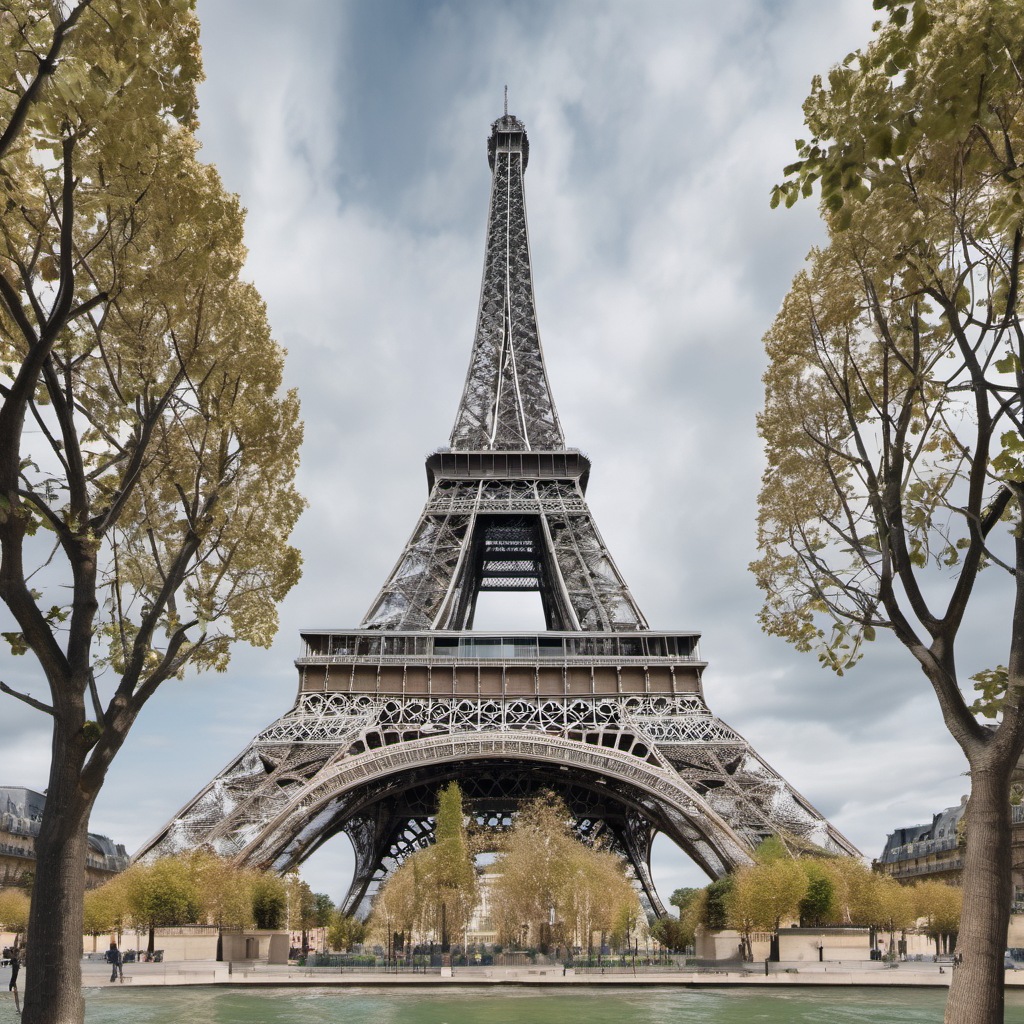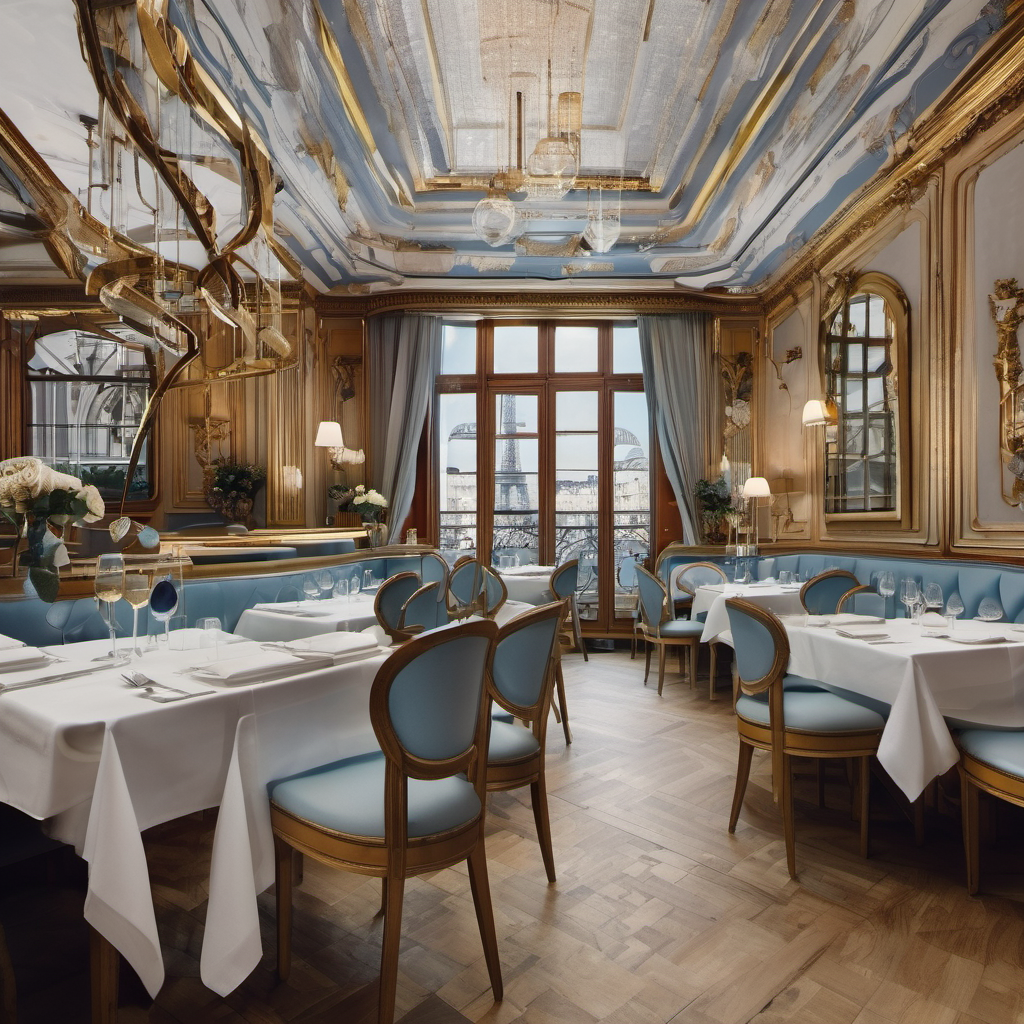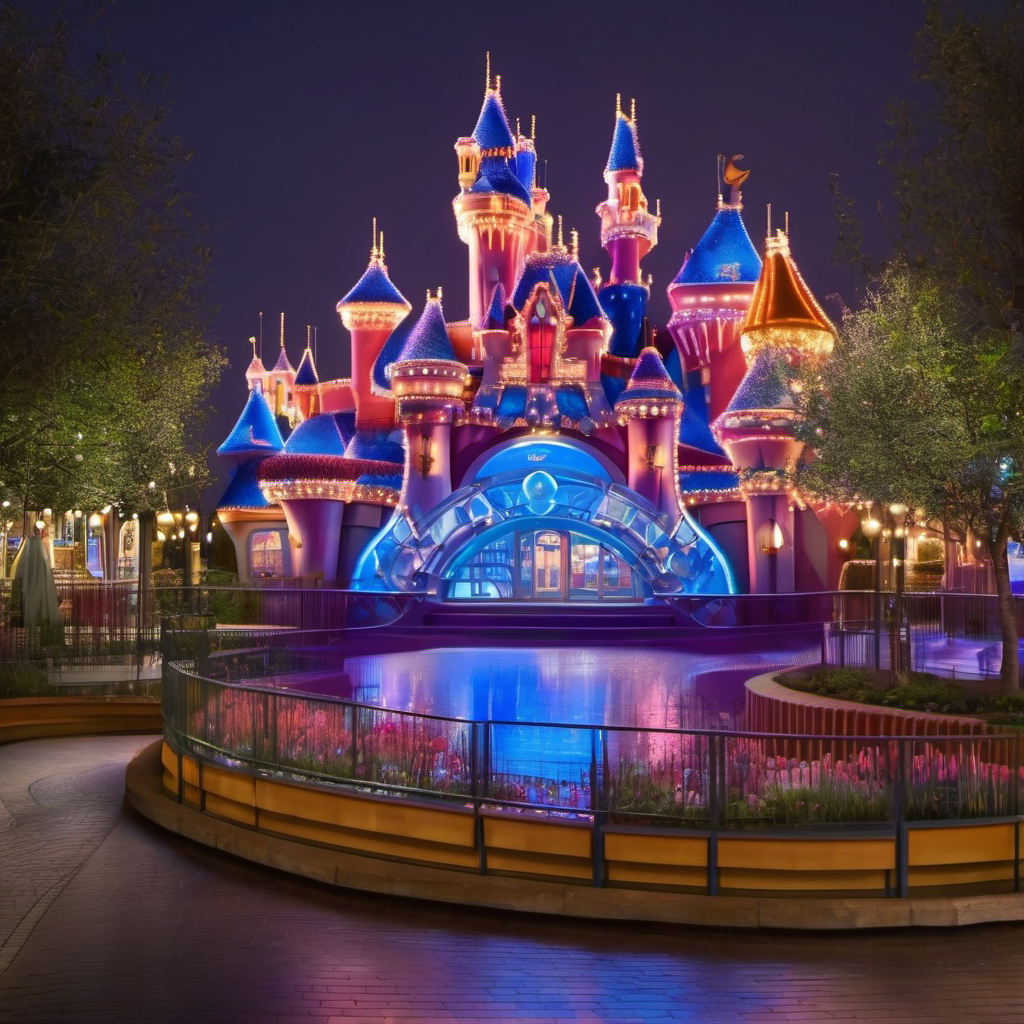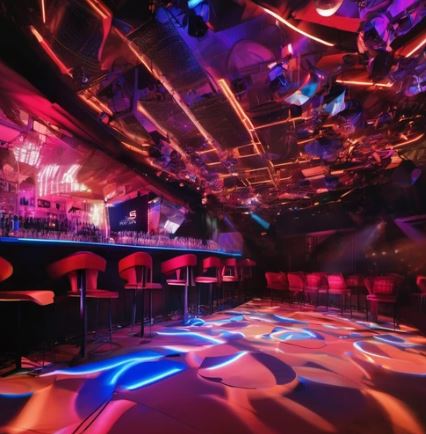
History of Paris and the Parisian Picnic: A View from the Eiffel Tower:
Paris, known worldwide for its rich history and vibrant culture, is a city that continues to capture the hearts of millions. From its roots as a humble Roman settlement to its current status as a global hub of art, fashion, and gastronomy, Paris is a city where the past and present dance together on the cobblestone streets. Let’s unpack the layers of this enchanting city, and then dive into how you can enjoy a quintessential Parisian experience: a picnic with a view of the Eiffel Tower.
The Evolution of Paris:
Paris began as a small settlement on the Île de la Cité, expanded by the Romans and later transformed into a major medieval city. It saw the grandeur of the Sun King, Louis XIV, and the tumult of the French Revolution. Each epoch added a layer to its architectural and cultural heritage, making Paris a living museum that thrills history buffs and romantics alike.
Adventure in the City of Lights:
For the adventure seekers, Paris offers more than just historical landmarks. Imagine kayaking down the Seine at sunset or exploring the mysterious catacombs beneath the city streets. Every corner of Paris promises an adventure that makes your heart skip a beat, especially if you find yourself running late for a dinner reservation after a leisurely museum tour.
Culinary Delights: Best Restaurants and Cuisine:
Paris and cuisine go hand in hand like wine and cheese. Speaking of cheese, the city’s restaurants serve up everything from haute cuisine by Michelin-starred chefs to hearty meals at quaint bistros. For a taste of classic French cooking, try Le Meurice or L’Ambroisie. If your taste buds are more adventurous, delve into fusion dishes at spots like Septime or Le Chateaubriand.
Top 15 Things to Do in Paris:
- Marvel at the masterpieces in the Louvre: The Louvre isn’t just a museum; it’s a world within walls. Housing thousands of works from different civilizations and times, the Louvre offers treasures like the Mona Lisa and the Venus de Milo. Plan several hours to wander through its expansive galleries.
- Stroll through the Luxembourg Gardens: Originally the royal gardens of the Luxembourg Palace, this green haven is perfect for a leisurely walk or a rest by the fountain. Children can sail miniature boats in the pond, a popular activity for Parisian families.
- Enjoy a night out at the Moulin Rouge: Famous for its red windmill on the roof, the Moulin Rouge is the birthplace of the can-can dance. Today, it hosts spectacular shows that blend circus skills, dance, music, and elaborate costumes.
- Shop along the Champs-Elysées: One of the most famous streets in the world, the Champs-Elysées is lined with shops, theaters, and cafés. From luxury brands to the annual Christmas markets, it’s a place where Parisians and tourists mingle under the festive lights.
- Savor a macaron at Ladurée: No visit to Paris is complete without tasting a macaron from Ladurée. These small, round cakes, crisp on the outside and soft on the inside, come in a variety of flavors and are a true symbol of French culinary expertise.
- Discover Montmartre: This historic area is known for the Sacré-Cœur Basilica and its breathtaking views of Paris. Montmartre has been a hub for artists, with its charming streets lined with studios and lively squares.
- Snap a selfie with the Mona Lisa: While she might be smaller than expected, Mona Lisa’s enigmatic smile in the Louvre is worth the visit. Early morning or late evening is the best time to avoid the crowds.
- Get lost in books at Shakespeare and Company: An iconic English-language bookstore facing the Notre-Dame, it’s a cozy spot for book lovers. The store has a history of hosting aspiring writers and offers a quaint café next door.
- Watch the city light up from Montparnasse Tower: For the best panoramic views of Paris, head to the Montparnasse Tower. Unlike the Eiffel Tower, it offers a spectacular, unobstructed skyline including the Eiffel itself, especially beautiful at sunset.
- Hunt for treasures at Marché aux Puces de Saint-Ouen: The largest antique market in the world, it’s a fascinating place to explore for vintage lovers and bargain hunters, with items ranging from classic French furniture to retro memorabilia.
- Relax at Place des Vosges: Known as the oldest planned square in Paris, it’s a perfect spot for a quiet afternoon. The surrounding arcades are filled with art galleries, cozy cafés, and boutiques.
- Indulge in a pastry class: French pastries are an art form, and taking a class can be a delightful way to learn the secrets of making perfect croissants or eclairs.
- Unravel history at the Palace of Versailles: Just outside Paris, this grand palace is a testament to the lavishness of French royalty. The Hall of Mirrors, the opulent gardens, and the Queen’s Hamlet are especially stunning.
- Wander through Père Lachaise Cemetery: As the final resting place for famous figures like Jim Morrison, Oscar Wilde, and Edith Piaf, it offers a serene walk through artfully crafted monuments and quiet tree-lined paths.
- Midnight picnic at Square du Vert-Galant: This small park located at the tip of the Île de la Cité offers beautiful views of the Seine. A midnight picnic here, with the city lights reflecting on the water, is both romantic and memorable.

Family Fun and Romantic Escapes:
For families, Paris is not just about the playgrounds (though there are plenty); it’s about experiencing magic on a scavenger hunt through the Louvre or enjoying a boat ride in Bois de Boulogne. Couples will find romance in the air, whether it’s a kiss atop the Eiffel Tower or a quiet moment away from the buzz at the serene Canal Saint-Martin.
Things for families to do in Paris?
Paris is a fantastic city for families, offering a variety of activities that cater to all ages. Here are some great things for families to do while visiting the City of Lights:
- Disneyland Paris: A magical day trip from central Paris, Disneyland Paris is a dream come true for children and adults alike. The park offers thrilling rides, parades, and opportunities to meet favorite Disney characters. Don’t miss the Walt Disney Studios Park next door for movie-themed attractions and shows.
- Cité des Sciences et de l’Industrie: Europe’s largest science museum is located in the Parc de la Villette and is perfect for curious minds. It includes a planetarium, submarine, and various interactive exhibits on science and technology. The museum also features a special area for younger children called the Cité des Enfants.
- Luxembourg Gardens: These beautiful gardens are ideal for a leisurely day out. Kids can play with traditional wooden sailboats in the large fountain, ride ponies, watch a puppet show, or simply enjoy the playgrounds. Parents can relax in the serene surroundings or join in the fun.
- Jardin d’Acclimatation: This amusement park offers a delightful mix of rides, animal enclosures, and cultural exhibits. It’s smaller and more manageable than Disneyland, with a charming old-world feel that appeals to younger children.
- The Montmartre Funicular and Sacré-Cœur: Take the funicular up to the Basilica of Sacré-Cœur to save little legs from climbing the steep stairs. Once at the top, enjoy stunning views of Paris. The area around Montmartre is also fun to explore, with street artists and quaint shops.
- Boat Tour on the Seine: Seeing Paris from the water is an enchanting experience for all ages. Choose from several boat companies offering tours along the Seine. Many offer hop-on-hop-off services, allowing you to explore key sights like Notre Dame, the Eiffel Tower, and the Louvre at your own pace.
- Natural History Museum and Jardin des Plantes: This museum complex includes the Grande Galerie de l’Évolution, Mineralogy Museum, Paleontology Museum, and a small zoo. The Jardin des Plantes also features beautiful botanical gardens, perfect for a stroll.
- Paris Aquarium: Located at the Trocadéro Gardens, the Paris Aquarium is not only educational but also a relaxing diversion from the bustling city. It’s home to a wide variety of marine life and offers shark and ray feedings as well as a touching pool.
- Parks and Playgrounds: Paris has numerous parks with excellent playgrounds. The Parc de Belleville offers great slides and one of the best views of the city, while the Parc des Buttes-Chaumont features a lake, a waterfall, and several bridges that are perfect for adventurous kids.
- Musée Grévin: This wax museum can be a fun outing with older children, featuring lifelike statues of famous figures from history, sports, and entertainment. It’s a good indoor option if you encounter a rainy day in Paris.
- These activities provide a mix of educational experiences, outdoor fun, and unique Parisian culture, ensuring that every family member will have a memorable time in Paris

Things for couples to do in Paris include nightlife and nightclubs?
Paris, with its reputation as the “City of Love,” offers countless romantic activities for couples, including an exciting nightlife scene. Here’s a mix of romantic and fun nighttime activities for couples in Paris:
- Dinner Cruise on the Seine: Start the evening with a romantic dinner cruise along the Seine River. These cruises offer a chance to see many of Paris’s iconic landmarks illuminated at night while enjoying a gourmet meal. Companies like Bateaux Parisiens and Vedettes de Paris offer various options.
- Visit the Eiffel Tower at Night: Seeing the Eiffel Tower lit up at night is a must-do for couples. Every hour after sunset, the tower sparkles for five magical minutes, creating a perfect backdrop for a romantic moment.
- Stroll through Montmartre: This historic neighborhood, with its charming streets and the stunning Basilica of Sacré-Cœur, is wonderfully romantic to explore by night. The area is full of artists, quaint shops, and cozy cafes where you can enjoy a late-night drink or dessert.
- Attend a Cabaret Show: Paris is famous for its cabaret shows, which can be both glamorous and entertaining. The Moulin Rouge, Lido de Paris, and Crazy Horse offer dazzling performances with a mix of dance, music, and often spectacular costumes.
- Jazz Clubs: For a more laid-back night, visit one of Paris’s famous jazz clubs. Duc des Lombards and New Morning are great spots to enjoy live jazz in an intimate setting.
- Rooftop Bars: Enjoy a cocktail and stunning city views at one of Paris’s chic rooftop bars. Le Perchoir Marais and the rooftop at the Terrass” Hotel are popular choices that offer a stylish atmosphere and panoramic views of the city.
- Dance the Night Away: For those who love to dance, Paris offers many nightclubs with diverse musical offerings. Rex Club is one of the city’s most famous spots for electronic music. For a more upscale clubbing experience, try Le Baron or Silencio.
- Late Night Walks: One of the most romantic and cost-free activities is simply walking through Paris’s beautifully lit streets at night. Stroll along the banks of the Seine, wander through the Latin Quarter, or walk under the arcades of the Palais-Royal.
- Wine Bars: Paris has numerous wine bars where you can discover French wines in a cozy setting. Le Barav in Le Marais or O Chateau near the Louvre offer extensive wine lists and the opportunity to sample different regions and vintages.
- Attend a Midnight Movie: The historic cinema Le Champo in the Latin Quarter hosts late-night screenings, often of classic films, in a uniquely Parisian setting. It’s a cultural experience mixed with a bit of local nightlife.
These activities showcase the romantic and lively sides of Parisian nightlife, offering memorable experiences that couples can share together. Whether you’re looking for glamor, culture, or simply a quiet spot to enjoy each other’s company, Paris at night has something for every couple.

Trending: What's Hot in Paris Right Now:
Currently, Paris is seeing a revival of vintage fashion markets and pop-up art galleries. The city is also buzzing with eco-friendly initiatives, so expect more green spaces and sustainable dining options popping up around town.
Best Places to Visit:
Don’t miss the iconic sights like Notre Dame and Sacré-Cœur, but also make time for lesser-known spots like the Musée Rodin or the quirky Musée des Arts Forains. Each place tells a story, creating a tapestry of experiences that is uniquely Parisian.
The Art of the Parisian Picnic:
No visit to Paris is complete without a picnic. The Champ de Mars offers a breathtaking view of the Eiffel Tower—a perfect backdrop for sipping rosé and nibbling on a baguette. Remember, it’s all about the setup: a cozy blanket, a selection of cheeses, some fresh fruit, and of course, a little dessert. Macarons or tarte tatin, anyone?
Getting Around: Parisian Transportation:
Navigating Paris is an adventure in itself. The metro is your best friend with its extensive network that feels like a mini underground city. Bikes are also a great way to see the city, with numerous Velib’ stations available. Just remember, riding a bike with a baguette under one arm is considered an advanced skill!
Exploring these activities will give you a rich sense of what Paris has to offer, from its historic landmarks to its vibrant cultural scene:
Whether you’re seeking adventure, relaxation, or a taste of local flavor, Paris provides an array of experiences that cater to all. Here are five of the best restaurants in Paris, each showcasing a different aspect of French cuisine and providing a unique dining experience:
- Le Meurice Alain Ducasse: Located in the luxurious Le Meurice hotel, this restaurant offers an exquisite fine dining experience. Under the direction of legendary chef Alain Ducasse, the restaurant serves French haute cuisine in a palatial setting inspired by the Salon de la Paix at the Château de Versailles. The emphasis is on simplicity and the purity of flavors, with dishes often constructed around a single ingredient.
The experience is enhanced by impeccable service and an extensive wine list, making it a must-visit for those who appreciate the artistry of French gastronomy.
2. L’Ambroisie: Situated in the historic Place des Vosges, L’Ambroisie is a temple of French gastronomy. With three Michelin stars, this restaurant, helmed by chef Bernard Pacaud, is known for its refined approach to classic French dishes. The setting is intimate, with sumptuous fabrics and elegant decor, creating a perfect atmosphere for special occasions. Signature dishes such as the sea bass with potato scales and caviar illustrate the chef’s meticulous attention to detail and commitment to quality.
3. Septime: This contemporary restaurant is often cited as one of the best in Paris for modern French cuisine. Chef Bertrand Grébaut offers a menu that changes regularly, reflecting the best seasonal ingredients available. The style is decidedly minimalist, with an emphasis on bold flavors and inventive combinations. The interior of Septime is sleek and modern, matching the innovative dishes served. It’s a favorite among food enthusiasts who appreciate a less formal, yet equally impressive dining experience.
4.Le Chateaubriand: Chef Iñaki Aizpitarte’s Le Chateaubriand blends Basque cuisine with French culinary traditions, creating a unique and relaxed dining experience. This bistro, located in the 11th arrondissement, is known for its avant-garde approach and has been a pioneer in the neo-bistro movement in Paris. The fixed menu offers a surprising array of dishes that are both creative and comforting, often featuring unusual pairings that work beautifully together. The ambiance is laid-back, with a lively vibe that attracts a diverse crowd.
5.Le Cinq: Located in the Four Seasons Hotel George V, Le Cinq is a classic example of luxury Parisian dining. Under the guidance of chef Christian Le Squer, the restaurant holds three Michelin stars and is famed for its precise and elegant approach to French cuisine. The dining room, overlooking the hotel’s marble courtyard, is opulent and sets the stage for a memorable meal. Dishes are masterpieces of flavor and presentation, with a focus on enhancing the natural beauty and taste of high-quality ingredients. The service is as impeccable as the food, making Le Cinq a pinnacle of Parisian fine dining.
These restaurants not only highlight the best of French culinary arts but also offer varied atmospheres and approaches, from the traditional elegance of Le Meurice Alain Ducasse and L’Ambroisie to the contemporary and innovative vibes of Septime and Le Chateaubriand. Each visit promises not just a meal, but a profound gastronomic journey through the flavors of France.
Travel tips in Paris and awareness?
Visiting Paris can be a dream come true, but like any major city, it’s essential to go prepared. Here are some useful travel tips and safety awareness points to help you make the most of your trip to Paris:
Travel Tips:
- Learn Basic French Phrases: While many Parisians speak English, knowing some basic French phrases can enhance your experience. Simple greetings, thank yous, and requests can go a long way in showing respect for the local culture.
- Public Transportation: Paris has an extensive and efficient public transportation system. The Métro (subway), buses, and trams are convenient and relatively easy to navigate. Consider purchasing a Navigo Découverte week pass or a carnet (book of tickets) for savings and ease.
- Stay Central: To minimize commuting and maximize sightseeing, choose accommodation in a central location. Areas like Le Marais, the Latin Quarter, or Saint-Germain-des-Prés are great options with easy access to major attractions.
- Plan Your Visits: Many popular sites like the Louvre or Versailles can be very crowded. Book tickets in advance and consider visiting early in the morning or late in the afternoon to avoid peak times.
- Dining Out: For dining, explore beyond the tourist-heavy areas. Seek out where locals eat to experience authentic French cuisine. Also, remember that in France, dinner is usually eaten later than in many other countries, often starting around 7-8 PM.
- Tap Water is Drinkable: You can drink the tap water in Paris; it’s safe and will save you money on buying bottled water.
- Dress Appropriately: Parisians are known for their good taste in fashion. While you don’t need to dress up all the time, having a smart-casual outfit for dining out or visiting prestigious attractions can enhance your experience.
- Shop at Local Markets: For a true taste of Parisian life, visit local markets. You’ll find fresh produce, meats, cheeses, and also some interesting souvenirs.
Safety Awareness:
- Beware of Pickpockets: Tourist areas are hotspots for pickpockets. Always keep your belongings secure and be mindful of your surroundings. Consider wearing a money belt or a cross-body bag that zips shut.
- Scams to Avoid: Be cautious of common scams such as the ring trick, petition girls, or those involving fake charity collections. If approached by someone trying to hand you something or ask for signatures, it’s usually best to politely decline and keep moving.
- Keep Emergency Numbers: Know the emergency numbers in France; 112 is the general emergency number, similar to 911 in the US.
- Travel Insurance: It’s wise to have travel insurance that covers theft, loss, and medical issues.
- Respect Local Laws and Customs: Be aware of local laws and customs. For instance, it’s illegal to buy counterfeit goods, and smoking in public places is restricted.
- Use Reputable Transportation Services: While it’s tempting to jump into the first taxi at the airport or station, make sure to use official taxi stands or verified ride-sharing apps.
By keeping these tips and safety advice in mind, you’ll be better prepared to navigate Paris efficiently and safely, ensuring a more enjoyable and stress-free visit.
Travel Tips for Safari:
Traveling on a safari is an extraordinary adventure, but it also requires careful planning and awareness of both environmental and cultural factors. Here are some essential travel tips and awareness points to ensure that your safari is both enjoyable and respectful to the natural and cultural environments you’ll be visiting.
1. Choose the Right Season:
The best time for a safari often depends on what you want to see and do. For example, the dry season (typically May to October in Southern and East Africa) is generally the best time for wildlife viewing as animals congregate around water sources. However, the wet season can bring lush landscapes and better birding opportunities, as well as fewer tourists.
2. Pack Appropriately:
Packing for a safari requires thoughtful consideration. Essentials include:
- Lightweight, breathable clothing in neutral colors that blend into the bush.
- Warm layers for early morning and late evening drives, which can be chilly.
- A broad-brimmed hat, high-SPF sunscreen, and sunglasses for protection against the sun.
- Sturdy walking shoes for bush walks.
- Binoculars and a good camera with extra batteries or a charger.
- A reliable insect repellent and a basic first aid kit.
3. Respect Wildlife and Safety Regulations:
Always listen to your guide’s advice and instructions, as they are trained to ensure your safety and to protect the wildlife. Keep noise levels to a minimum to avoid disturbing animals, and never attempt to attract animals’ attention.
4. Stay Healthy:
Consult with a travel clinic before your trip to get the necessary vaccinations and health advice. Malaria is a risk in many safari destinations, so antimalarials may be recommended. Always drink bottled or purified water and take precautions to avoid insect bites.
5. Travel Insurance
Obtain comprehensive travel insurance that covers medical emergencies, evacuation, and trip cancellation or interruption. This is crucial as remote safari locations may require special transportation in case of medical emergencies.
Cultural Awareness
1. Understand and Respect Local Customs:
Research and respect the customs and traditions of the local communities. This could include dress codes, greetings, and etiquette. Being culturally sensitive enhances interactions and avoids misunderstandings.
2. Support Local Economies:
Where possible, support local businesses by buying authentic handmade crafts, eating local cuisine, and using local guides. This helps ensure that the economic benefits of tourism are distributed within the community.
3. Environmental Consciousness:
Be environmentally conscious during your travels:
- Avoid single-use plastics; carry a reusable water bottle.
- Minimize your footprint by staying on designated paths during walks and drives.
- Follow the principles of “Leave No Trace” to ensure that you leave the environments as you found them for future visitors and the local wildlife.
4. Photography Sensitivity:
When taking photos, especially of local people, always ask for permission first. Be respectful of their privacy and dignity when photographing and sharing images.
5. Learn a Few Local Words:
Learning a few words in the local language can go a long way in showing respect and building rapport with the community members. Simple phrases like “Hello,” “Please,” “Thank you,” and “Goodbye” can make a significant difference.
Health and Safety Awareness:
Being aware of health and safety concerns is crucial for a safe and enjoyable safari experience. Be vigilant about your health, particularly in terms of hydration and sun exposure. Always have a plan for accessing medical care in case of an emergency, which should be discussed with your tour operator beforehand.
By following these tips and maintaining awareness of your surroundings and local customs, you can ensure a rewarding and responsible safari adventure that respects both the natural environment and the local cultures.
Embarking on a safari is not just about witnessing some of the world’s most iconic wildlife; it’s about immersing oneself in an experience that connects deeply with nature and different cultures. From the sweeping plains of the Serengeti to the watery wonderland of the Okavango Delta, each destination offers its own unique array of experiences and lessons. The thrill of spotting the Big Five, the serene beauty of a sunrise viewed from a hot air balloon, or the intricate dance of local cultural practices all contribute to the tapestry of a safari adventure.
As you plan your safari in 2024, remember to choose activities that resonate with your interests, whether they involve thrilling wildlife encounters, peaceful explorations of nature, or engaging cultural exchanges. Packing appropriately, respecting wildlife and local customs, and maintaining health and safety practices will enhance your experience and ensure that your journey is as rewarding as possible.
Moreover, a safari offers an opportunity to contribute positively to conservation efforts and local communities. Through responsible tourism practices, every visitor has the power to impact conservation and community development positively. This makes a safari not just a personal journey, but a chance to be part of a larger story of environmental stewardship and cultural respect.
In conclusion, a safari in 2024 is more than a vacation; it’s a profound engagement with the world that few other experiences can match. It promises not only the adventure of a lifetime but also a pathway to greater understanding and appreciation of our planet’s incredible wildlife and the diverse cultures that surround it. Ready your binoculars, pack your adventure spirit, and step into the wild – the heartbeat of Africa awaits.




